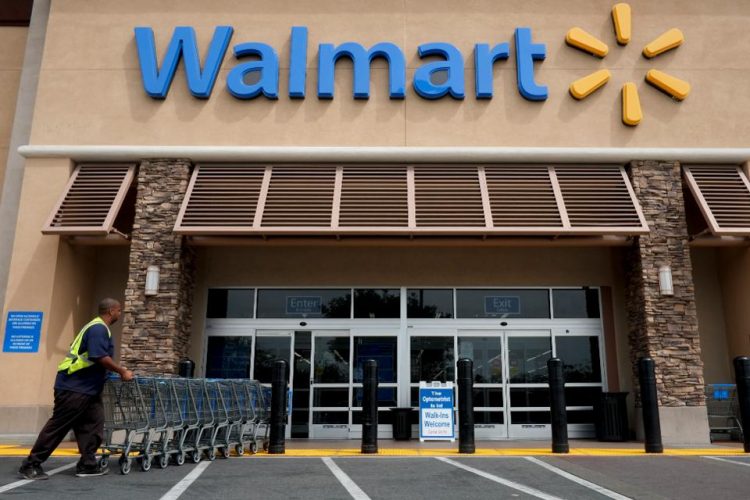
Apparently taking lovability lessons from United Airlines (at least pre David Dao), ex-Uber boss Travis Kalanick and Pharma-bro Martin Shkreli, Wal-Mart (WMT) decided to lay down the hammer on suppliers telling them that they’ll be fined not only if deliveries are late but also if they’re early and that WMT will tolerate no disputes. Why is the company doing this? Will it help the mega merchant? What does this mean for investors?

The mega-retailer is getting tough with its suppliers. Will that be productive? (AP Photo/Jae C. Hong, File)
What’s Happening
According to Bloomberg writer Matthew Boyle, this program “labeled ‘On-Time, In-Full’ . . . aims to add $1 billion to improve revenue by improving product availability at stores (and) underscores the urgency Wal-Mart feels as it raises wags, cuts prices, and confronts a powerhouse rival in Amazon.com Inc. that’s poised to grow with tis planned purchase of Whole Foods Markets Inc.”
Citing a company sources, Boyle wrote that this On-Time-In-Full (OTIF) threshold was being raised from 90% to 95%. This can be a serious challenge since WMT acknowledged that none of its suppliers had been hitting the 95% target and that some big vendors, including even Procter & Gamble, had even been as low as 10%.
OTIF failures will be analyzed by a scoring system to assess fault; WMT versus the supplier and vendors can at least take comfort in the fact that they’ll escape the fines if WMT turns out to be at fault. There’s been no indication WMT would monetarily credit suppliers in cases of the latter, but in the spirit of fairness (to WMT), Boyle, quoting WMT, writes “If suppliers don’t agree with the fine, too bad: ‘Disputes will not be tolerated.’”
Obviously, this is bullish for consultants who can sell vendors on the idea they’ll be able to help them get into compliance, especially smaller vendors. As to what this might do for WMT, let’s look not to management spokespeople but to numbers.
Does It Make Sense?
The suggestion that a consequent improvement in product availability can add $1 billion to revenue sounds impressive if you say it fast enough (much thanks to Brooklyn Law School Professor Richard Farrell, for putting that delightful phrase into my head back in my youth). Slowing down, however, we should note that WMT’s trailing-12-month revenue was $487 billion. So the addition comes out to 0.21%, or if we round it off, it amounts to zero. In other words, we’re not talking about a genuine potential improvement in WMT’s top line. We’re talking about something that’s barely a decimal rounding error.
So let’s just acknowledge the obvious; the stated revenue goal is nonsense (and I’ll leave it readers to mentally edit in the more accurate but less respectably publishable word).
If it’s not revenues, then it has to be costs-profits, and if that’s the case, I have to assume we need to look at return on capital, the penultimate measure of this sort of thing. So let’s do that for WMT, and also for Amaon.com (AMZN) and for WMT’s brick-and-mortar peers.
Table 1 defines capital two ways, as total assets and as equity (return on equity is something that can be boosted by skillful use of debt). Also, besides showing the peer group as a whole, I subdivide the peer group by size; mega (market cap above $10 billion), large ($1 billion to $10 billion) and small (everything else big enough to be includable in a Russell 3000 type universe).
Table 1
AMZN














